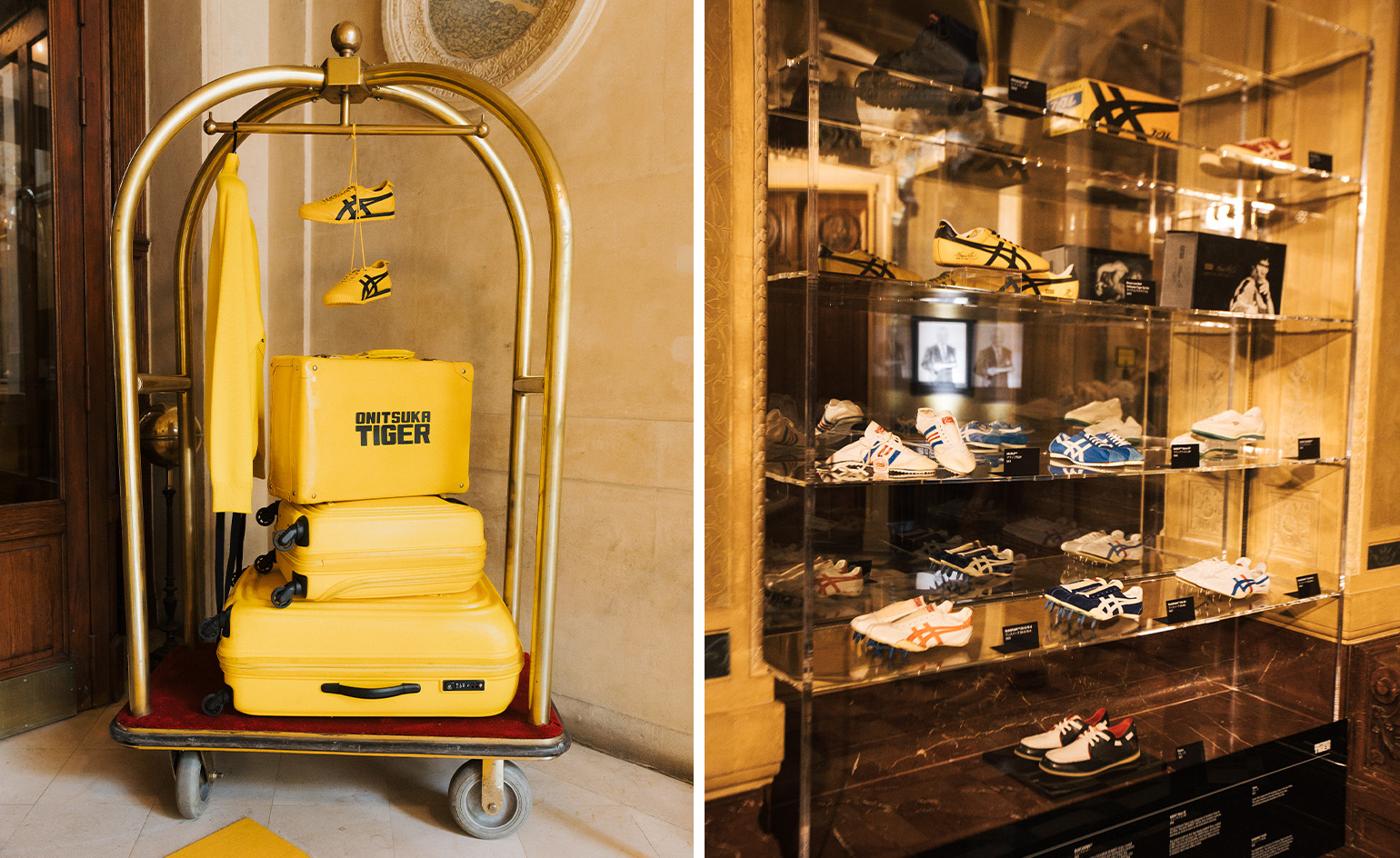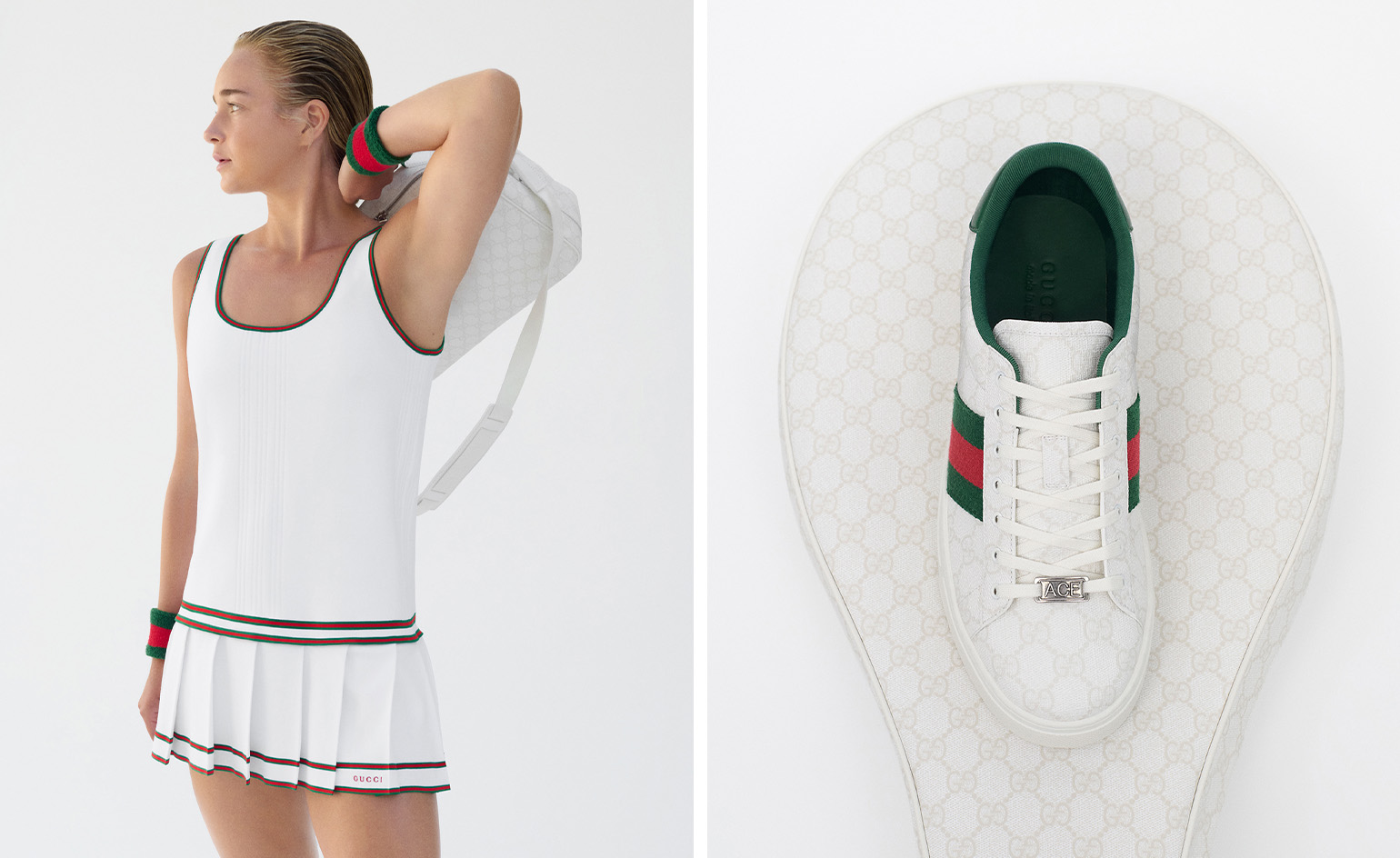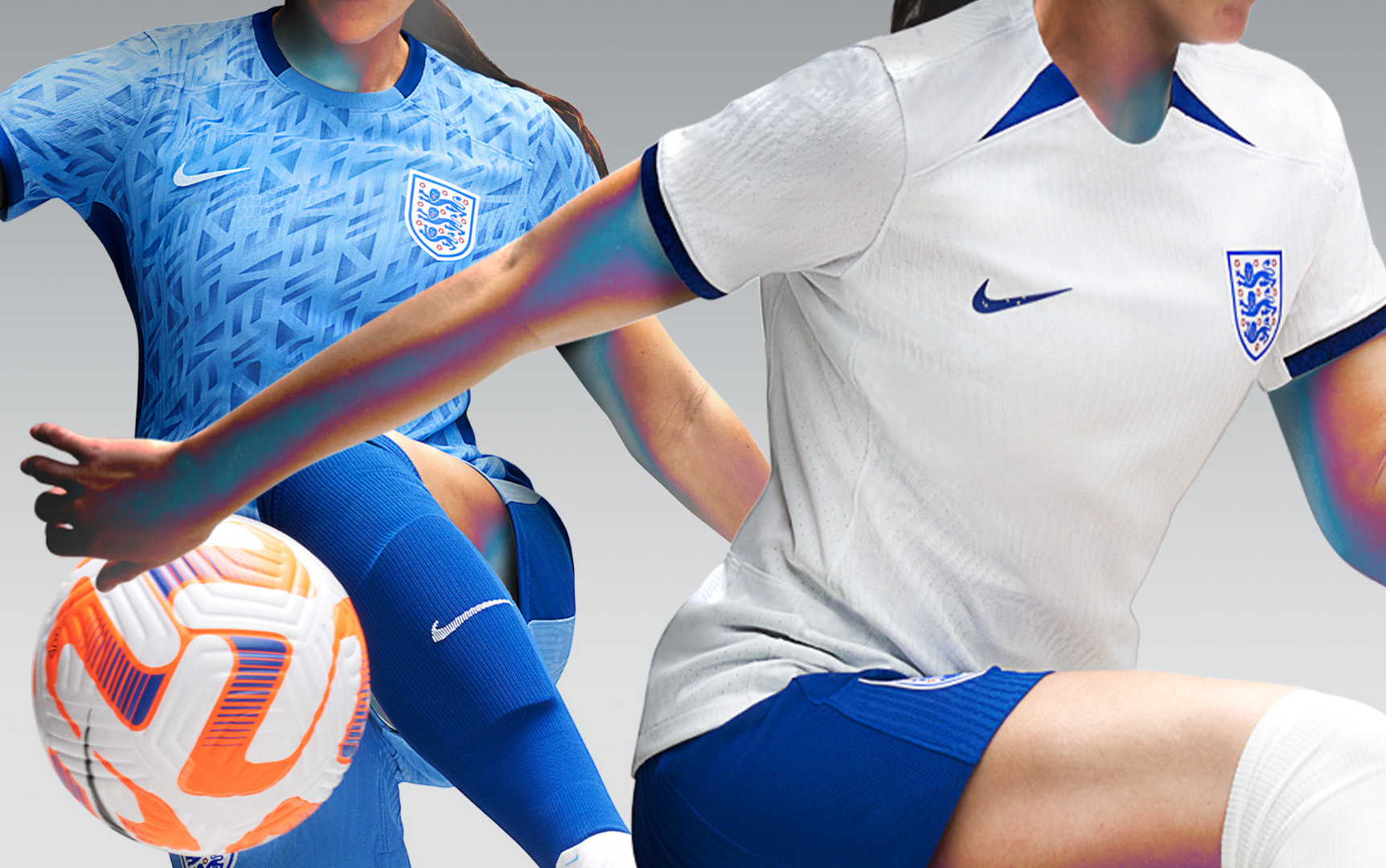‘Help me go faster’: How Nike Air is priming its athletes for Olympic success
Ahead of the Paris 2024 Olympics, Nike’s chief design officer Martin Lotti opens up to Wallpaper* about its latest high-performance sneakers, developed alongside world-leading athletes and honed using AI technology

The technology we know as Nike Air almost didn’t happen. Marion Franklin ‘Frank’ Rudy, an aerospace engineer, had a wild idea in the late 1960s: to soften the impact of athletic shoes by embedding tiny airbags within the soles of the footwear. Rudy presented his concept to 23 shoe companies, and one by one, they rejected it. It wasn’t until 1977 that he pitched it to Nike co-founder Phil Knight. Knight took Rudy’s prototype for a test run around the company’s Beaverton, Oregon campus and, satisfied with the results and the shoe’s performance, he decided to push Nike into the future with the innovation we all know as Nike Air.
Nearly 50 years later, 40 years after the Air Max 1 – the first sneaker to visibly show Air – debuted in 1987, and a few months before the Paris 2024 Olympics, Nike unveiled Air’s latest innovations on April 12 in France at Palais Brongniart, the former home of the Paris Stock Exchange. Nike introduced prototypes for the Nike Victory 2 and Nike Maxfly 2 for track athletes, a new basketball sneaker called the Nike G.T. Hustle 3, its most advanced football boot, the 2024 Nike Air Zoom Mercurial, and the Nike Jam for breakdancers. The new Air debut culminated in a fashion show on April 13 starring several Nike athletes including American track and field sprinter Sha'Carri Richardson, American gymnast Jordan Chiles, Kenyan long-distance runner Eliud Kipchoge, French footballer Grace Geyoro, and American tennis superstar Serena WIlliams.
A closer look at Nike Air’s Olympic-ready sneakers

The Nike Air Dragonfly sneaker, a pair of spikes which will be used by track and field Nike athletes at the Paris Games
Nike’s design lead times average about four years for an Olympic shoe, and 18 months for a regular sneaker. ‘It always starts with listening to the voice of the athletes,’ Martin Lotti, Nike’s chief design officer, explains to Wallpaper*. ‘It’s sitting down with them, and they are literally telling us what's working and what’s not working. So it’s not leveraging our athletes for billboards and advertising only. The most important thing we get is for insights that we get from them.’
Nike further optimised its Air technology with more than athlete interviews, data, and testing; it also harnessed the power of AI at its Oregon-based Nike Sport Research Lab (NSRL), where all the magic is developed. ‘AI is creative fuel for our teams, allowing us to explore a new unknown with unprecedented speed,’ says Lotti. ‘Before, the main limit you faced as a designer was time. Now, the only limit is your own imagination.’ Thanks to the digital tools and capabilities, Air can be finetuned across size, pressure, and application. Ideas can be prototyped and tested quickly at the NSRL. ‘We’re only scratching the surface when it comes to complex geometries that were simply unimaginable before,’ he explains.

At the Nike Sport Research Lab, an athlete tests the GT Hustle 3 basketball shoe
The new Olympic Nike Air shoes share an aesthetic consisting of white uppers, a blue swoosh, and orange accents. The number one need Nike hears from athletes according to Lotti is: ‘Help me be faster.’ Nike built on the 2020 addition of Zoom Air to its track spikes by flattening the outsole profile for a more stable ride. The new Mercurial football boot adds 10 per cent more energy than its predecessor, plus an ultra-light Flyknit upper with two less layers than the previous shoe, so it’s lighter and more malleable. Basketball players had another wish, says Lotti: ‘I want to feel as fresh in the fourth quarter as I did in the first.’ Research showed the new G.T. Hustle 3 did just that, proving that the players consumed less oxygen for the same amount of work they did with the G.T. Hustle 2. ‘Air offers the most energy return of anything else out there; it’s the gold standard,’ says Lotti. ‘So, every improvement, every gain they make, we give more of that back to them.’
The NSRL received insights for its database from 6,000 athletes, including breakdancing Olympic hopeful Logan ‘Logistx’ Edra. Edra, who hopes to participate in breakdancing’s Olympic debut, demonstrated her moves for the new Jam, a breakdancing sneaker which uses Air and features an upper made of mesh, leather, and suede, and a drop-in midsole that cushions impact and lets dancers feel close to the ground.

While the Nike Alphafly 3, a carbon-plated long-distance running sneaker, is tested on the Oregon track
‘I had to give them a lot of feedback that was personal to me and dance because they're still learning about what we like as breakers, and what we need for our shoes,’ the breakdancer tells Wallpaper*. Edra danced, spun, slid, and tried to beat up the prototypes to test the upper’s durability and the sneaker’s flexibility. ‘I remember in the beginning the shoe was a lot heavier and less flexible, less durable,’ she says. ‘When I tried the recent model I was like, damn these feel super light. These feel perfect for breaking and I feel the details of how much they put into the shoe technology-wise to make it suitable for breaking.’
Wallpaper* Newsletter
Receive our daily digest of inspiration, escapism and design stories from around the world direct to your inbox.
‘If it’s not new and better, honestly, it doesn't deserve a Swoosh,’ says Lotti. The true test for Nike Air’s latest innovations will be during the Paris 2024 Summer Olympic Games from July 26 to August 11, 2024.
Ann Binlot is a Brooklyn-based freelance writer who covers art, fashion, design, architecture, food, and travel for publications like Wallpaper*, the Wall Street Journal, and Monocle. She is also editor-at-large at Document Journal and Family Style magazines.
-
 Put these emerging artists on your radar
Put these emerging artists on your radarThis crop of six new talents is poised to shake up the art world. Get to know them now
By Tianna Williams
-
 Dining at Pyrá feels like a Mediterranean kiss on both cheeks
Dining at Pyrá feels like a Mediterranean kiss on both cheeksDesigned by House of Dré, this Lonsdale Road addition dishes up an enticing fusion of Greek and Spanish cooking
By Sofia de la Cruz
-
 Creased, crumpled: S/S 2025 menswear is about clothes that have ‘lived a life’
Creased, crumpled: S/S 2025 menswear is about clothes that have ‘lived a life’The S/S 2025 menswear collections see designers embrace the creased and the crumpled, conjuring a mood of laidback languor that ran through the season – captured here by photographer Steve Harnacke and stylist Nicola Neri for Wallpaper*
By Jack Moss
-
 In time for the Olympics, Onitsuka Tiger opens a Paris ‘hôtel’
In time for the Olympics, Onitsuka Tiger opens a Paris ‘hôtel’Hôtel Onitsuka Tiger, on Avenue des Champs-Élysées, promises an immersive journey into the Japanese brand’s 75-year history, featuring some memorable ’residents’
By Jack Moss
-
 Highlights from Haute Couture Week A/W 2024
Highlights from Haute Couture Week A/W 2024Wallpaper* picks the best of Haute Couture Week A/W 2024 in Paris, from Olympics-inspired offerings at Dior and Thom Browne to the first Chanel collection since the departure of Virginie Viard
By Jack Moss
-
 Tennis fashion for serving a style ace this summer
Tennis fashion for serving a style ace this summerAs Wimbledon begins on Monday (1 July 2024), the fashion brands serving up tennis style this summer, from Gucci’s 1970s-inspired capsule collection to a Loewe T-shirt from ‘Challengers’
By Jack Moss
-
 Is AI the future of fashion trend forecasting?
Is AI the future of fashion trend forecasting?Trend forecasting agencies like Heuritech are using AI technology to scan over three million social media images a day, helping brands predict what you’ll want to wear. But what does this mean for creativity? Mary Cleary explores
By Mary Cleary
-
 The England women’s football kit was inspired by Wembley’s art deco architecture
The England women’s football kit was inspired by Wembley’s art deco architectureWe explore the architectural origins and innovative engineering behind the England women’s football kit, designed by Nike, as the team prepares to take on Spain in the World Cup final
By Jack Moss
-
 Nike celebrates womanhood with ‘Goddess Awakened’, an immersive dance performance in Paris
Nike celebrates womanhood with ‘Goddess Awakened’, an immersive dance performance in ParisNike Women united with polymathic choreographer Parris Goebel on a performance that paid homage to ’the collective power of womanhood through movement, style and self-expression’
By Jack Moss
-
 Sotheby’s Louis Vuitton and Nike ‘Air Force 1’ by Virgil Abloh auction raises $25.3 million
Sotheby’s Louis Vuitton and Nike ‘Air Force 1’ by Virgil Abloh auction raises $25.3 millionTwo hundred pairs of the limited-edition trainers fetched a total of $25.3 million, with proceeds going to the The Virgil Abloh™ “Post-Modern” Scholarship Fund, the most valuable charitable sale at Sotheby’s in nearly a decade
By Laura Hawkins
-
 ‘Icons’ by Virgil Abloh and Nike celebrates the design history of ‘The Ten’
‘Icons’ by Virgil Abloh and Nike celebrates the design history of ‘The Ten’As rumours swirl around the release of ‘The 20', Virgil Abloh and Nike release the Taschen-published tome ‘Icons', which charts the making of the creative polymath and American sportswear giant's sneaker collaboration ‘The 10'
By Laura Hawkins